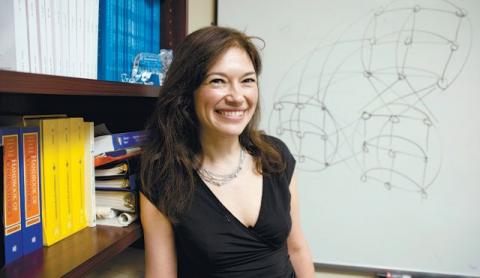Graduate of Israel's Technion wins prestigious MacArthur fellowship 'genius' grant
Other 2012 MacArthur genius grant recipients are Uta Barth, 54, from Los Angeles, a conceptual photographer, Claire Chase, 34, from Brooklyn, whose International Contemporary Ensemble engages audiences in the appreciation of contemporary classical music, Raj Chetty, 33, an economist at Harvard University, whose research analyzes how policy decisions affect real-world behavior; Eric Coleman, a geriatrician at the University of Colorado School of medicine whose work helps patients make the transition from hospitals to homes or other care facilities; Junot Diaz, a fiction writer affiliated with the Massachusetts Institute of Technology whose works explore experiences of immigrants; David Finkel, a Washington Post journalist known for his reporting on military affairs; and Olivier Guyon, an optical physicist and astronomer at the University of Arizona.
Chudnovsky was born in Russia, and immigrated with her family to Israel when she was 13. After completing her first and second degrees at the Technion, she pursued her doctorate at Princeton University. She has worked as a professor at Columbia University since 2006. Chudnovsky’s work focuses on graph theory. “I research abstract, theoretical constructs connected to graphs,” she explains.
Explicating the conferral of the 2012 fellowship to Chudnovsky, the MacArthur Foundation site stated:”In an early breakthrough, Chudnovsky and colleagues proved a conjecture offered in the early 1960s, known as the “Strong Perfect Graph Theorem,” that identifies specific criteria required for a graph to fall into the “perfect” class. Any perfect graph can be colored efficiently − and graph coloring bears a direct relation to finding efficient solutions to problems such as allocating non-interfering radio frequencies in communication networks. Since this landmark accomplishment, Chudnovsky has continued to generate a series of important results in graph theory. Although her research is highly abstract, she is laying the conceptual foundations for deepening the connections between graph theory and other major branches of mathematics, such as linear programming, geometry, and complexity theory.”
By Asaf Shtull-Traurin and Lital Levin

